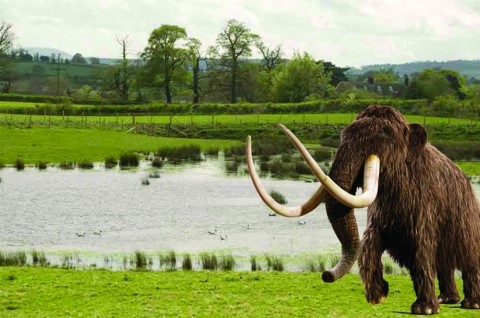
Ice Age Ponds: Project Evaluation
Ice Age Ponds was a National Lottery Heritage Fund (NLHF) project set up by the Herefordshire Wildlife Trust in partnership with the ‘Earth Heritage Trust’ and the ‘Herefordshire Amphibian & Reptile Team.’ to survey and improve the condition of the area’s Ice Age Ponds, more commonly referred to as Ice Age Ponds.
Near the end of the last Ice Age the landscape of North-West Herefordshire was abruptly and dramatically changed. At a time when mammoth and other megafauna roamed the countryside, a retreating glacier created distinctive landforms including ‘kettle-hole’ depressions, formed as huge chunks of glacial ice melted. Many of these depressions filled with water to create ‘Ice Age Ponds’ and, remarkably, some persist today, an incredible legacy that has survived for over 20,000 years.
A nationally scarce resource, Ice Age Ponds are geologically fascinating and important for wildlife. However, they are vulnerable and are regularly damaged or destroyed. They have received little investigation and are poorly understood by the public, landowners and the scientific community. By engaging with local communities and landowners we will protect many of the remaining ponds, discover their historic and present wildlife and provide trails and interpretation that explores them and their history
In 2019 Resources for Change were appointed to evaluate the performance of the project, and over three years the evaluation process engaged stakeholders, participants, and project officers to assess the impact of the project and its success in reaching its goals, and the lessons learnt along the way to inform future efforts.
We altered the focus of the midterm evaluation to enable us to work with the project team to support them as they adapted and evolved the original project to deliver within the context of the Covid-19 Pandemic and lockdown restrictions.
Despite the challenging and completely unforeseen environment, the project has managed to deliver against most if not all of the key deliverables.
They have reached and successfully engaged volunteers, schools, local communities, and landowners. Although not quite to the levels initially hoped for it’s remarkable that they have achieved as much as they have. And a lot of that is down solely to the hard work, flexibility, enthusiasm, and passion of the project team and the volunteers.
Together with the continued enthusiasm of the volunteers and their stated desire to continue their involvement after the project draws to a close, this bodes well for future management efforts and the local legacy.

